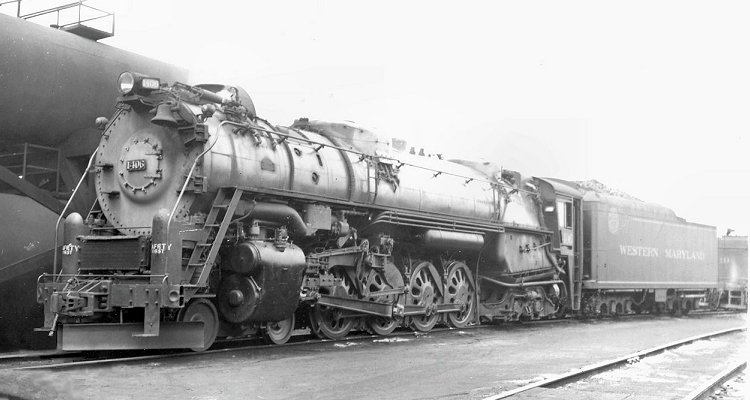The Western Maryland was part of the "Alphabet Route", a multi-carrier alternative to the single-line service offered by other railroads between the Midwest and the Northeast. In the effort to speed merchandise trains over its portion of the Alphabet Route, the WM received twelve class J-1 4-8-4s from Baldwin Locomotive Works in 1947. The WM was the last North American railroad to introduce the 4-8-4 type, and gave them the name "Potomac" in place of the standard Northern designation. They were unusual (though not unique) in having the lowest drivers, at 69 inches in diameter, applied to a 4-8-4. This, plus their 25½X32-inch cylinders and 255 p.s.i. of boiler pressure, gave them a tractive effort of 70,591 pounds, and their locomotive weight was 506,500 pounds. They had 4973 square feet of evaporative heating surface, 2170 square feet of superheating surface, and almost 107 square feet of grate area.
The Potomacs' service life was cut short after only seven years by dieselization of the Western Maryland, although they were not sold for scrap until 1957 when their equipment trust ran out. An undesignated lensman snapped No. 1406 at Hagerstown, Maryland, shortly after delivery from Baldwin. This photo came from a Flickr site that dropped from the Internet in 2008, but belonged to the massive Harold Vollrath collection. This image has been digitally altered to remove an obstruction that partially hid the characteristic Western Maryland "rock pusher" pilot.
